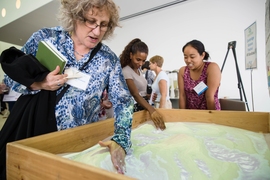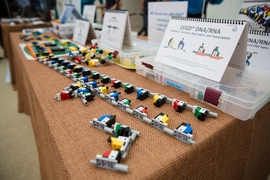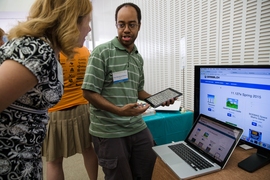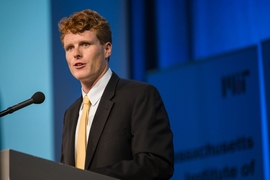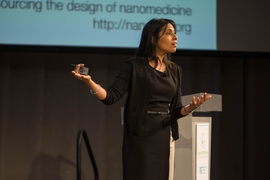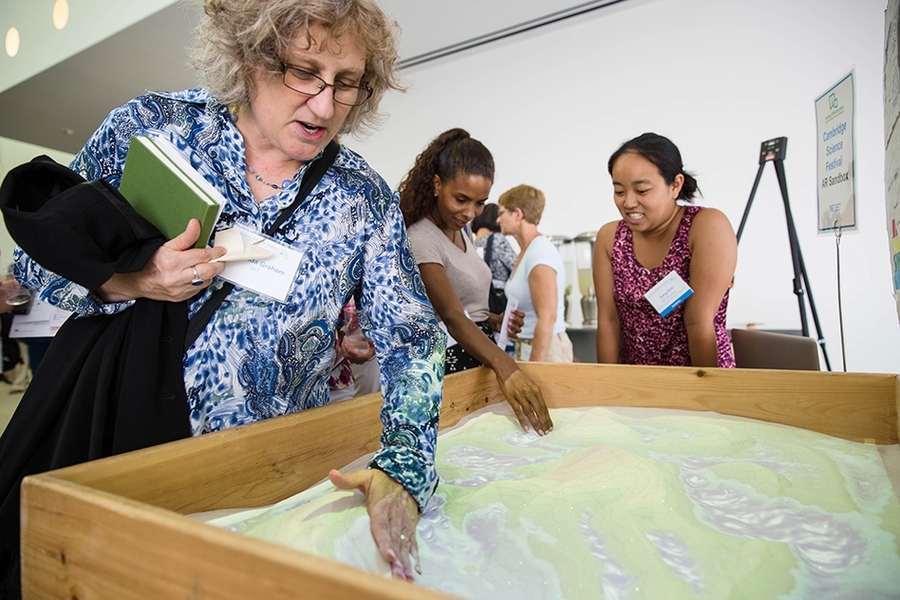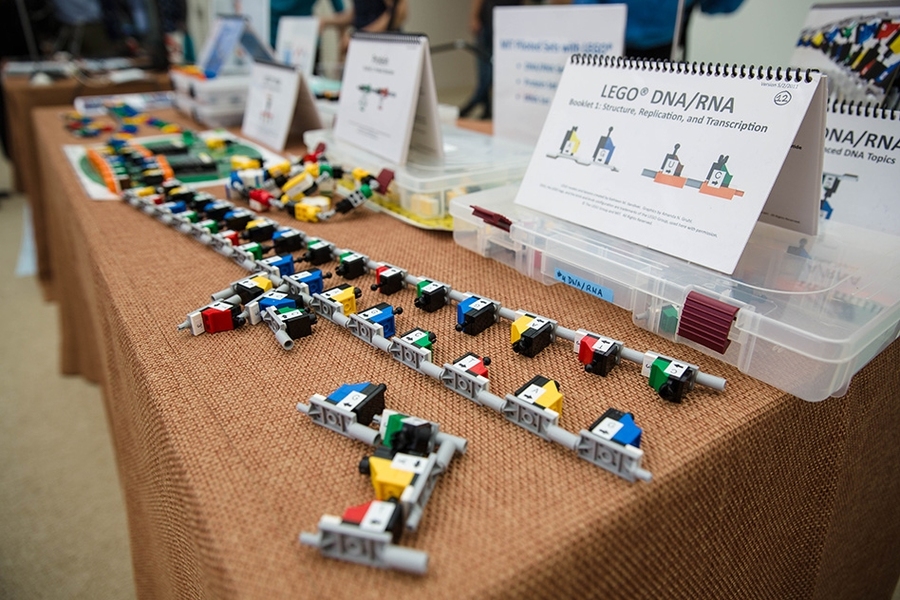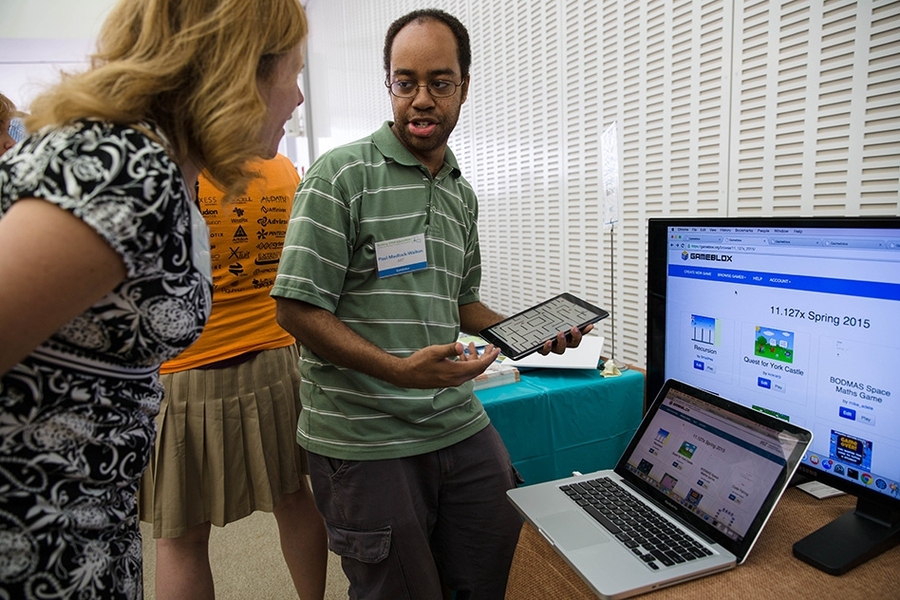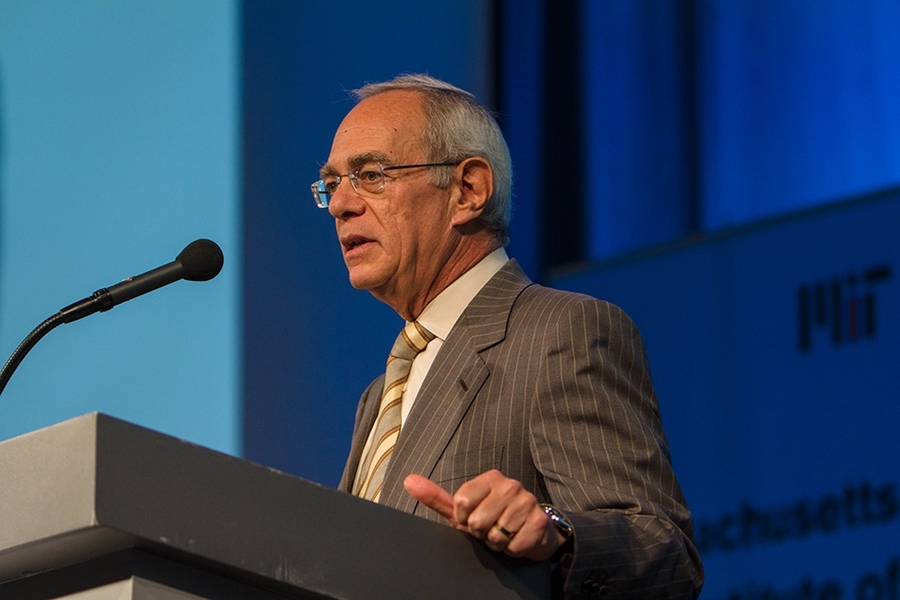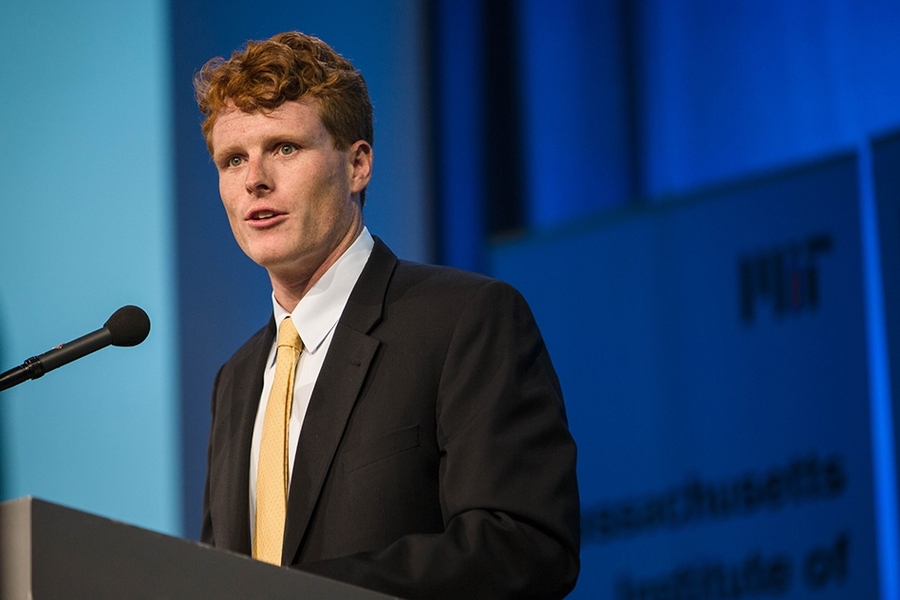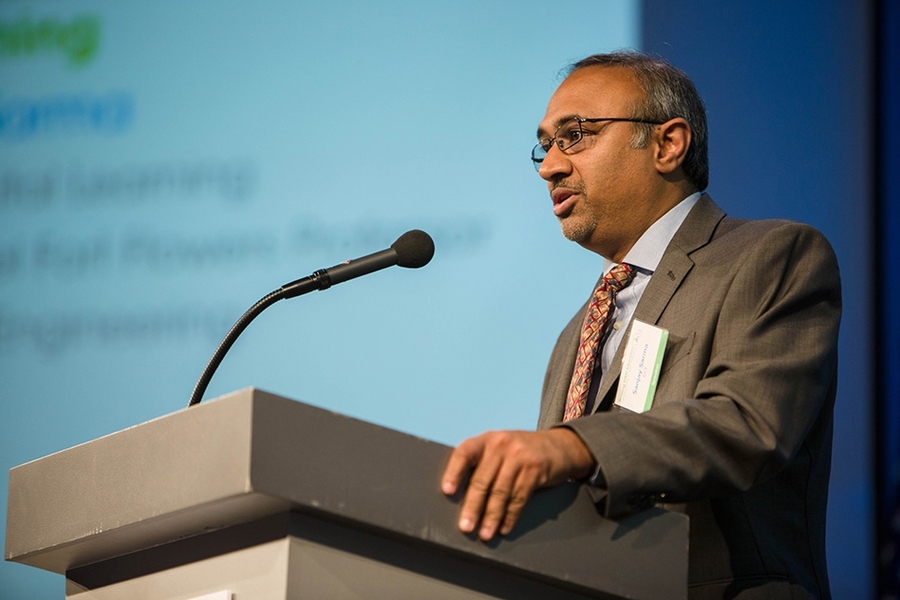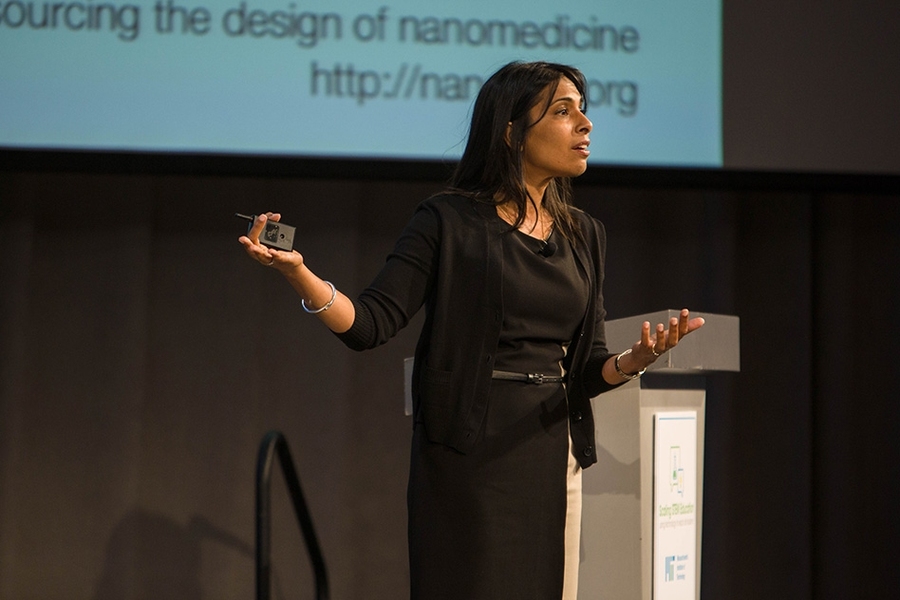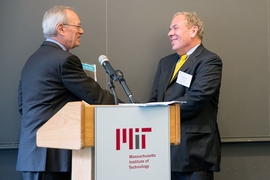New computer programs designed to teach children multiplication and division, interactive demonstrations of electricity and magnetism, and molecular models used to teach key biology concepts were all on display Thursday afternoon at the MIT Media Lab during an event examining science, technology, engineering, and mathematics (STEM) education.
The event, dubbed “Scaling STEM” and hosted by MIT President L. Rafael Reif and U.S. Congressman Joe Kennedy III (D-Mass.), focused on how to use technology to improve access to quality STEM education for all students. The afternoon featured demonstrations of new learning tools and outreach efforts, presentations by leading education experts, and a panel discussion.
In his opening remarks, Reif shared why improving access to STEM education is so important to him. He recalled how, as a young student of limited means, studying textbooks developed by MIT faculty members inspired him to pursue a career as an engineer. Reif knew intimately, he said, that education can transform a young person’s life, “because it certainly transformed mine.”
Sanjay Sarma, dean of digital learning at MIT, related how, during the process of compiling the Institute-wide Task Force report on the future of MIT education, he and his colleagues realized that MIT has a mission to “make learning and education available … to all levels.” The key to providing this sort of access, he explained, is making education scalable, adaptable, and attainable to a wide variety of people around the world.
Scaling STEM
Discussion during the event focused on how educators could not only improve STEM pedagogy, but also how they might reach the many children around the world who lack access to quality STEM education.
Kennedy described increasing opportunities for students to engage with science and engineering at a young age, but said more needed to be done and applauded MIT’s efforts to reach out to underserved populations. “This is an area where MIT is leading the way,” Kennedy said.
Jeffrey Leiden, CEO of Vertex Pharmaceuticals, emphasized the importance of extending the reach of STEM education to attract more women and minorities to related fields. He noted that science and technology were revolutionizing the way we live our lives, and that the only way for this progress to continue, is to “train the next generation of leaders.”
One example could be found in the work of Faria Kader, a high school senior who traveled to her native Bangladesh this summer to teach children about science. Using learning modules and curriculum developed by the MIT Edgerton Center, Kader provided 150 Bangladeshi students with new projects and learning opportunities. Edward Moriarty, an Edgerton Center instructor, added that Kader’s work, and the learning modules developed by the Edgerton Center, are not solely focused on STEM: Another purpose behind this outreach work is to get children “encouraged and wanting to learn.”
Role models
A reoccurring theme during the event was the importance of role models in inspiring young students. Sangeeta Bhatia, the John J. and Dorothy Wilson Professor of Health Sciences and Electrical Engineering and Computer Science at MIT, spoke about how role models could be used to encourage more women and minorities to pursue careers in STEM fields. She cited a study conducted by researchers at MIT’s Abdul Latif Jameel Poverty Action Lab (J-PAL) that demonstrated how female role models in politics have helped boost the aspirations and educational achievement of young women. The power of digital technology, she added, should be used to “increase the visibility of role models.”
In her presentation, Angela Belcher, the W.M. Keck Professor of Energy at MIT, discussed the importance of sharing her passion for science with students of all ages, even those too young to enter Kindergarten. While speaking about how the best part of her job at MIT is teaching, Belcher noted that freshmen are one of her favorite groups of students to work with due to their excitement, passion, and optimism. She highlighted her desire to, “translate the freshmen year at MIT to [students in the] first and second grade.” Belcher does this, she added, by giving presentations on chemical reactions, semiconductors, batteries, and solar cells to elementary school students in an effort to interest them in STEM. No child is too young “to start learning about chemical reactions,” she emphasized.
Empowering students
John Gabrieli, the Grover Hermann Professor of Health Sciences and Technology and Cognitive Neuroscience at MIT stressed that providing students of all ages with equal access to quality education is a daunting, but not impossible, challenge. In his view, neuroscience, technology, and personalized education should be used to provide the best educational experience for every student. Gabrieli posited that using new techniques, such as those that can identify conditions like dyslexia at a very early age, could help educators immensely in identifying children who might benefit from additional support.
Learning can not only be assisted through applying new research findings, but also through teaching with new media, explained Eric Klopfer, a professor of urban studies and planning at MIT and director of the Education Arcade. Klopfer described how video games can be used to educate and inspire students, and can be leveraged as teaching tools in the classroom. As examples, Klopfer highlighted several games developed at the Education Arcade, including Radix, a massive multiplayer online game in which players use math and science to make the world a better place.
Similarly, Bhatia discussed how media such as games and art could be used to teach difficult scientific concepts. She highlighted one project in which a member of her research group teamed up with an artist to create images of cells. Bhatia explained that the goal behind this work was to see if they could create, “virtual images that students can interact with.”
A “human endeavor”
The event concluded with a panel discussion moderated by Mitchel Resnick, the LEGO Papert Professor of Learning Research and head of the Lifelong Kindergarten group at the MIT Media Lab. The panel discussion — which featured Dale Allen, vice president for community engagement at Quinsigamond Community College; Karen Bomba, chief executive officer of Morpho Detection; Chris Dede, the Timothy E. Wirth Professor in Learning Technologies at the Harvard Graduate School of Education; Paul Muller, a physics and engineering teacher at the John D. O’Bryant School of Math and Science; and Brian White, associate professor of biology at the University of Massachusetts at Boston — centered around how to retain student interest in STEM fields, particularly among populations that are currently underrepresented in STEM.
Bomba noted the success of a program at her company in which young students spend a day with an engineer. One of the high school students who shadowed an engineer ended up interning at the company during college and is now employed there.
Resnick emphasized that the social side of learning plays a critical role in successfully scaling educational programs, noting that the success of the Scratch programming language is due, in part, to the large community that has formed around the tool. He also emphasized the need for further research and discussion about how to scale educational programs and technologies successfully. “As much as we have learned about scaling technology, education and learning is a very human endeavor,” Resnick noted.
